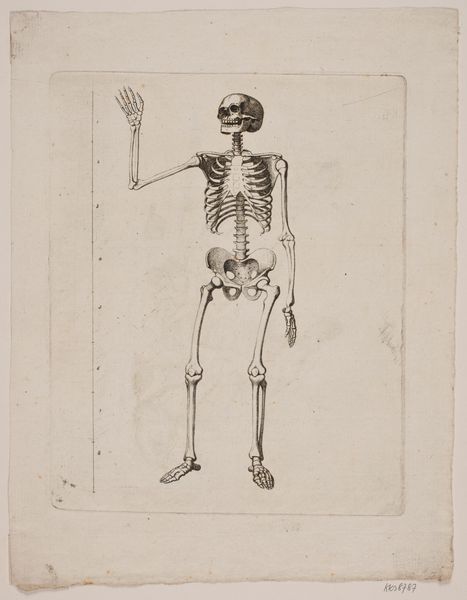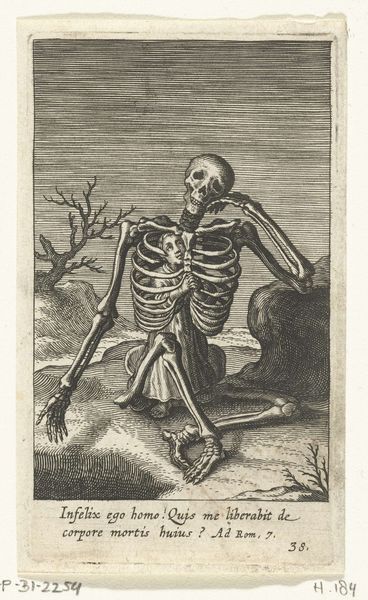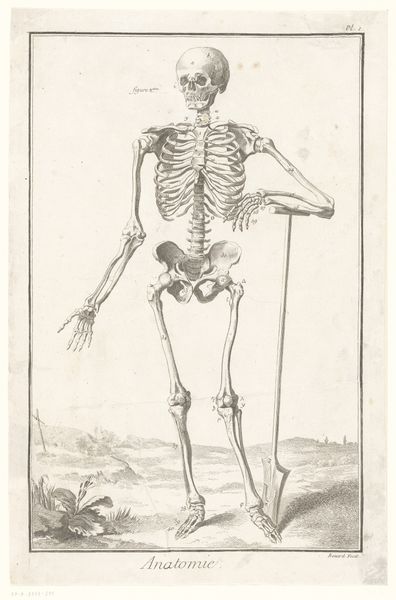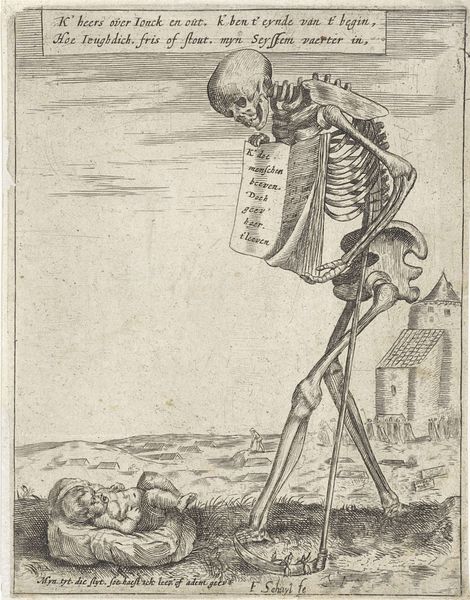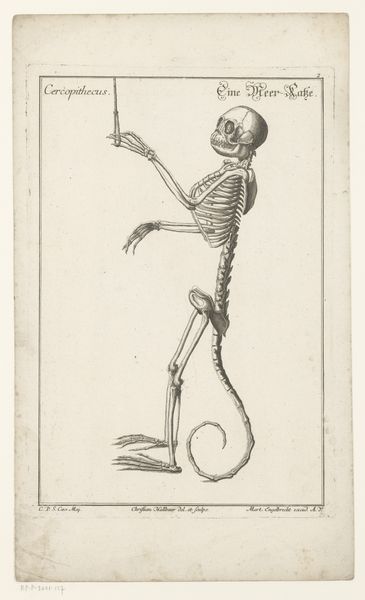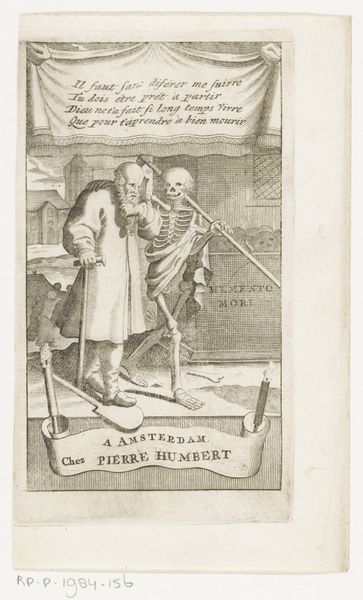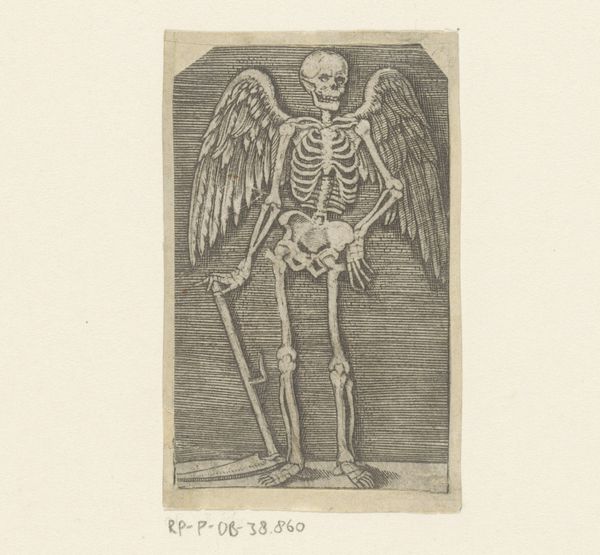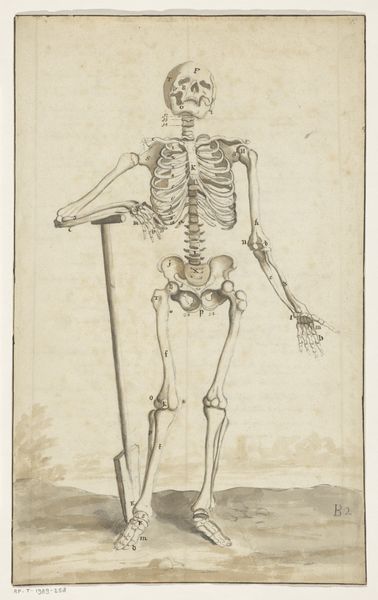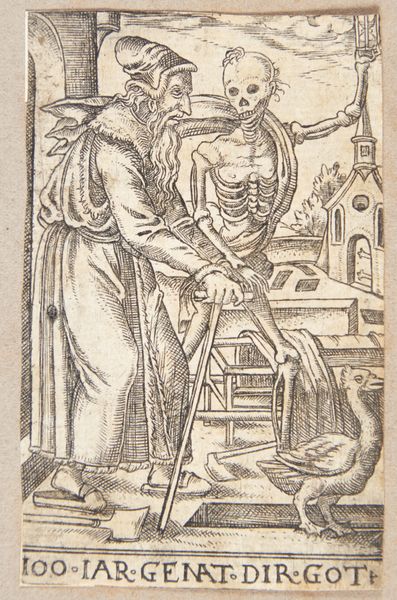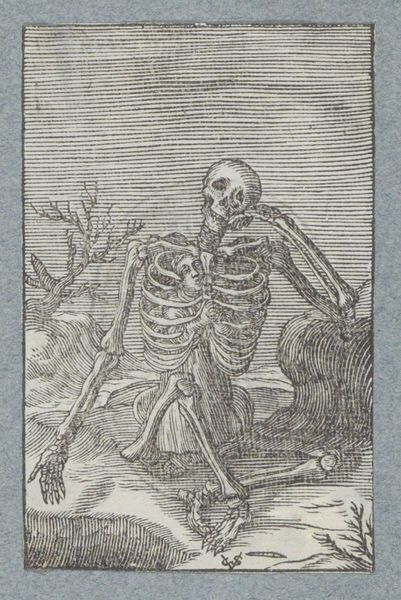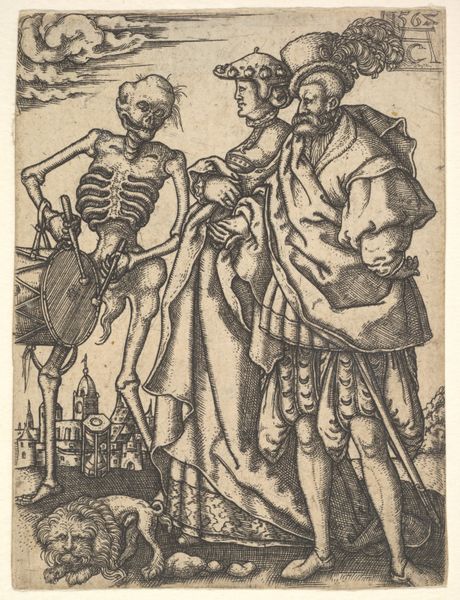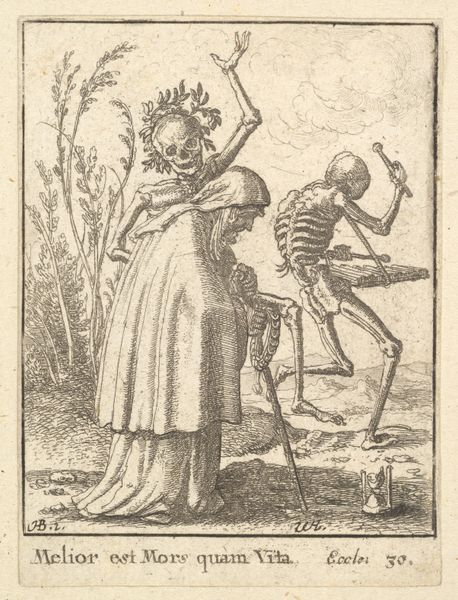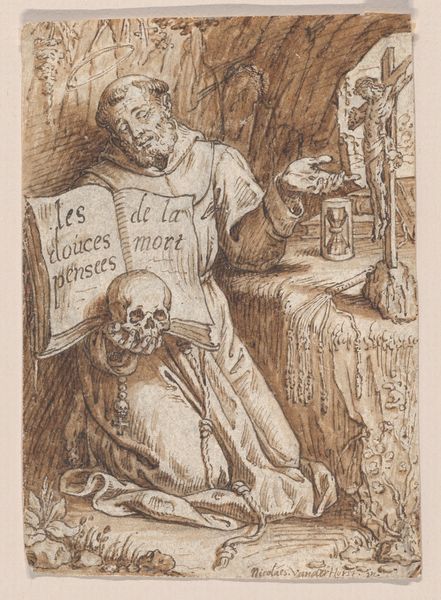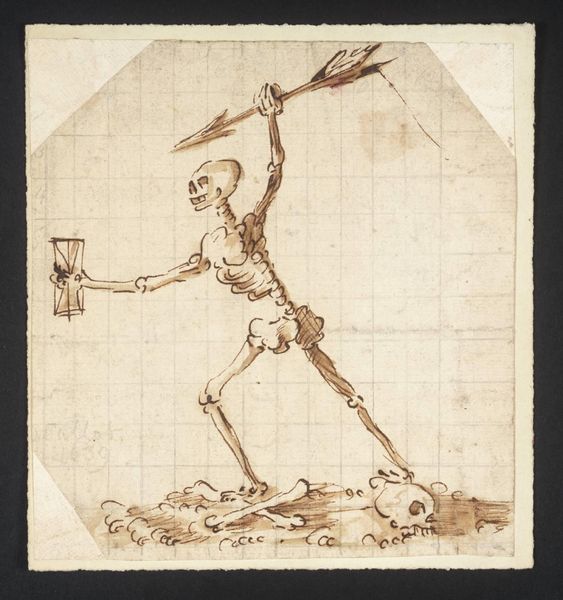
print, woodcut
#
medieval
#
allegory
# print
#
death
#
figuration
#
vanitas
#
woodcut
Dimensions: height 67 mm, width 57 mm
Copyright: Rijks Museum: Open Domain
Editor: So, this woodcut print, "Death with an hourglass, a scythe, a shovel and a coffin," is an anonymous piece from the 17th century. It's small but impactful. What strikes me is how starkly the symbols of mortality are presented. What do you see in this piece? Curator: I see a concentrated dose of cultural anxiety regarding mortality, ingeniously compressed into readily understood symbols. The hourglass, the scythe – these aren't merely instruments of death, they're signifiers of time’s relentless march and the inevitable harvest. What emotional register does the skeleton's *pose* strike for you? Editor: A sort of weary resignation, maybe? Almost a casual acceptance. I suppose it makes death seem...less frightening? Curator: Indeed. It echoes the *memento mori* tradition; the art of reminding people of their own death. Think about the intended audience – the image imprints the universal lesson about the transience of life but I find the sky and birds slightly betray a hidden message. What's your read on the birds, a glimmer of freedom, hope? Editor: That's interesting, I was focused on the coffin. So the image doesn't only invoke mortality but it leaves a door ajar onto potential existences… So vanitas becomes an encouragement instead of admonition. It almost completely reframes the composition. Curator: Precisely! This print isn't just a morbid emblem. It's a culturally loaded mirror reflecting a complex attitude toward mortality that we can learn from. It tells of our attempts at understanding what is coming. Editor: I hadn’t considered it that way at first. It's fascinating to unpack all those layers. I learned quite a bit about the cultural memory and the use of visual symbols that evoke psychological impact. Curator: Likewise. Thinking about vanitas beyond admonitions opened my eyes as well, looking into hope of the unknown future.
Comments
No comments
Be the first to comment and join the conversation on the ultimate creative platform.
